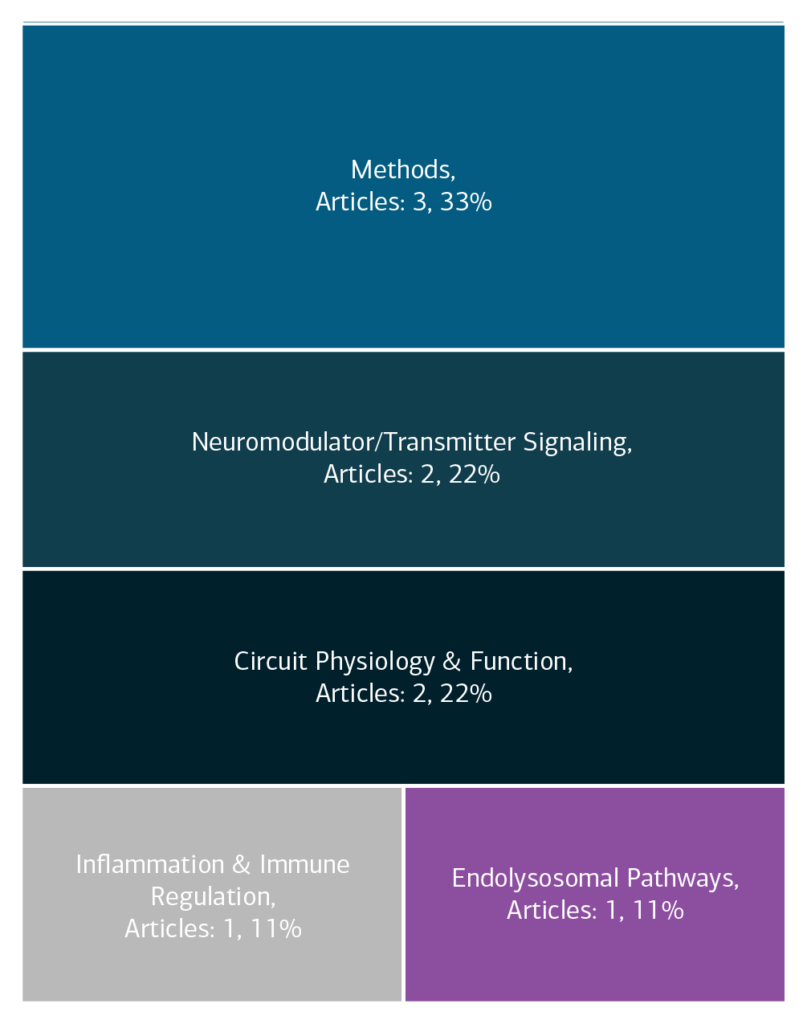Circuitry and Brain-Body Interactions | 2021
Circuit Mechanisms for Dopamine Neuron Vulnerability and Resilience in Parkinson’s Disease
Study Rationale: While neurodegeneration in Parkinson’s disease (PD) affects many cells, dopamine neurons are particularly vulnerable, and their loss drives many of the major motor difficulties in PD. To date, the inner workings of the dopamine neurons themselves have been extensively studied to identify sources for this selective vulnerability. However, neurons in the brain are heavily interconnected and interdependent with their surrounding cells and circuitry. Understanding how the “neighborhood” in which dopamine neurons live and function influences their well-being is a critical missing piece in the puzzle of PD.
Hypothesis: Team Calakos hypothesizes that circuit properties of incoming neuronal connections (synapses), surrounding non-neuronal cells (glial cells), and key modulatory cells (those that produce the chemical signal, acetylcholine) contribute to dopamine neuron loss in PD.
Study Design: Team Calakos will evaluate circuit contributions to dopamine neuron dysfunction in PD using state-of-the-art mouse genetic models and patient-derived stem cell models (organoids). Team Calakos members bring unique, specialized expertise that allows the team to isolate and manipulate each of these three components (synapses, glia, and neuromodulators) individually to test its role in dopamine neuron degeneration. In addition to functional manipulations, the team will capture the molecular signatures of the connections dopamine neurons make with each of its “neighbors” to determine which are most disrupted in PD.
Impact on Diagnosis: Recognizing new processes that cause dopamine neuron demise in PD creates new opportunities for intervention. Team Calakos’ bidirectional tests of function may identify not only circuit properties that accelerate disease, but also identify factors that promote resistance to cell death.
Leadership
Project Outcomes
Team Calakos' collective team efforts will reveal the extent to which circuit components outside of the dopamine neurons themselves can serve as new targets to slow the progression of dopamine neuron death in Parkinson’s disease. View Team Outcomes.
Team Outputs
Click the following icons to learn more about the team’s outputs:
Overall Contributions
Here is an overview of how this team’s article findings have contributed to the PD field as of November 2023. There are two different categorizations of these contributions – one by impact to the PD community and a second by scientific theme.
Impact

Theme

Featured Output
Below is an example of a research output from the team that contributes to the ASAP mission of accelerating discoveries for PD.
Astrocytic LRRK2 controls synaptic connectivity through ERM phosphorylation
Mutations in LRRK2 are associated with familial PD. However, the functional impact of LRRK2 mutations on the onset and progression of PD is yet to be determined. To further understand how mutations impact function, it is essential to recognize the normal role of non-mutated LRR2. Team Calakos has discovered a novel role of LRRK2 in the regulation of astrocyte morphology and synaptic connectivity. Conversely, PD-related mutations in LRRK2 prompted astrocytic and synaptic dysfunction.
Team Accolades
- Updates will be posted when available.
Other Team Activities
- Updates will be posted when available.
In the News
- Duke-led teams awarded $18 million to investigate Parkinson’s disease (Duke Today, October 26, 2021)












